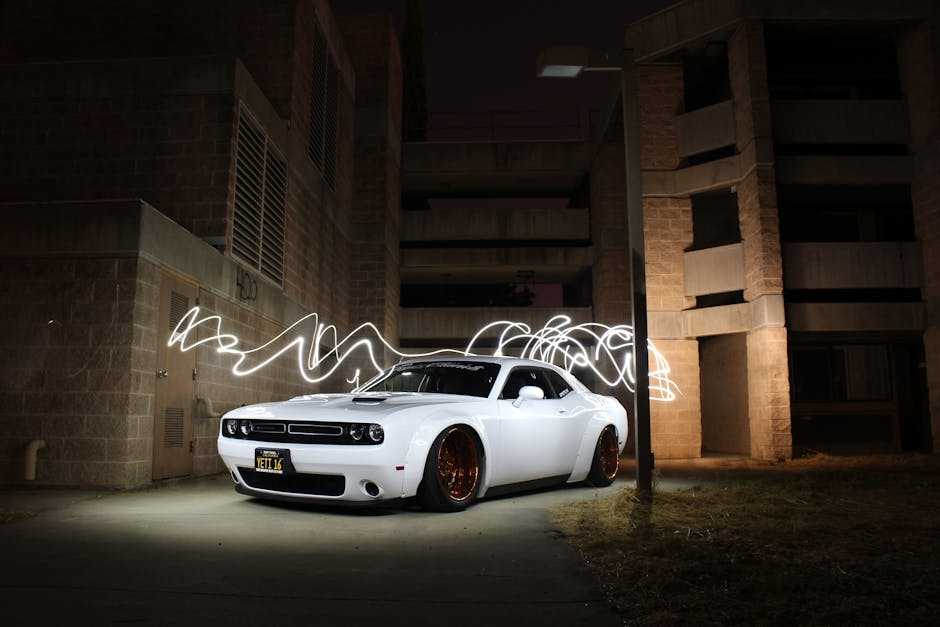The Rise of Autonomous Driving Technology
Autonomous driving technology’s evolution has transformed the automotive industry. Initially considered experimental, self-driving cars are now a reality. Numerous advancements in sensors, software, and artificial intelligence (AI) have accelerated this shift.
Sensor technology includes LiDAR, radar, and cameras. LiDAR uses light detection to create 3D maps, radar measures distances and speeds, and cameras capture high-resolution images. These sensors provide vehicles with a comprehensive understanding of their surroundings.
AI and machine learning algorithms process the data collected by sensors. These algorithms enable vehicles to make real-time decisions and navigate complex environments. Advanced driver-assistance systems (ADAS) include features like:
- adaptive cruise control
- lane-keeping assist
- emergency braking
Various levels of autonomy exist, ranging from Level 1 (driver assistance) to Level 5 (full automation). Most luxury cars now offer Level 2 or Level 3 autonomy, where drivers still need to supervise and intervene if necessary. However, some manufacturers are pushing towards Level 4 and Level 5 autonomy.
Several major players in the automotive and tech industries are investing in autonomous driving technology. Companies like Tesla, Google, and traditional automakers are leading the charge. These entities are testing and refining their systems to bring fully autonomous vehicles to market.
Collaborations between car manufacturers and tech firms are crucial. Partnerships allow companies to combine automotive expertise with technological prowess. For example, BMW and Intel have teamed up to develop autonomous driving solutions.
Government regulations also influence the rise of autonomous driving technology. Laws and guidelines are evolving to address safety, liability, and ethical concerns. Strict regulations ensure safer and more secure autonomous driving systems.
Consumer demand for convenience and safety drives the adoption of autonomous tech. Buyers of luxury vehicles prioritize advanced technological features that enhance their driving experiences. Autonomous driving tech meets these expectations by offering unparalleled safety, comfort, and innovation.
The rise of autonomous driving technology redefines what consumers expect from luxury cars. As these advancements continue, the standard for luxury vehicles will evolve, focusing on cutting-edge technology and innovation.
Key Players in the Luxury Car Market

Various luxury car manufacturers are at the forefront of incorporating autonomous driving technologies to redefine luxury and convenience for consumers.
Tesla
Tesla, known for its electric vehicles, has become a leader in autonomous driving technology. The brand’s Autopilot and Full Self-Driving (FSD) systems offer advanced features like lane keeping, adaptive cruise control, and automated lane changes. By leveraging over-the-air updates, Tesla continuously improves its autonomous capabilities, a significant selling point for consumers.
Mercedes-Benz
Mercedes-Benz focuses on integrating high-level autonomous features into its S-Class and EQS models. The Drive Pilot system offers Level 3 autonomy, enabling hands-free driving in specific conditions. The brand prioritizes safety and luxury, integrating features like advanced driver-assistance systems (ADAS) and AI-based navigation.
BMW
BMW emphasizes technology and performance in its autonomous driving endeavors. The brand’s iNEXT and 7 Series models feature advanced autonomy, including Highway Assistant for semi-autonomous driving. BMW utilizes a combination of LiDAR, radar, and cameras to provide a seamless autonomous experience, enhancing driver comfort and safety.
Audi
Audi offers innovative autonomous driving features in its luxury models, such as the A8. The Audi AI Traffic Jam Pilot provides Level 3 autonomy, allowing the car to manage driving in traffic situations. Audi focuses on combining state-of-the-art sensors and AI to offer a premium and safe autonomous driving experience.
Benefits of Autonomous Driving in Luxury Cars
Autonomous driving enhances safety and raises comfort in luxury cars. Buyers benefit from innovative features and cutting-edge technology.
Enhanced Safety
Autonomous driving technology greatly improves vehicle safety. Advanced driver-assistance systems (ADAS) reduce human error, which is responsible for 94% of accidents according to the National Highway Traffic Safety Administration (NHTSA). Sensors like LiDAR, radar, and cameras offer 360-degree awareness, ensuring timely responses to potential hazards. For instance, Tesla’s Autopilot can detect objects up to 250 meters away, allowing for precise collision avoidance. Features such as automated emergency braking and lane-keeping support add layers of protection, making vehicle operation safer.
Increased Comfort and Convenience
Luxury cars with autonomous capabilities provide unparalleled comfort. Self-driving technology handles challenging driving conditions, reducing driver fatigue. Models like the Mercedes-Benz S-Class offer semi-autonomous features, allowing drivers to engage in other activities during commutes. Real-time traffic data integration further optimizes route planning, saving time. Parking assist systems in BMW iNEXT models autonomously park the vehicle, eliminating the hassle of maneuvering into tight spaces. Hands-free driving and adaptive cruise control create a relaxed driving environment.
Advanced Features and Innovation
- High-end autonomous vehicles boast cutting-edge features that redefine luxury.
- Over-the-air updates keep systems like Tesla’s Full Self-Driving continuously updated, enhancing performance without dealership visits.
- Audi’s AI Traffic Jam Pilot in the A8 enables hands-free driving in traffic jams, showcasing advanced neural network algorithms for real-time decision-making.
- Augmented reality dashboards in vehicles like the Mercedes EQS provide drivers with essential information overlaid on the windshield, enhancing navigation and safety.
- Luxury automakers prioritize innovation, ensuring their autonomous vehicles deliver state-of-the-art experiences.
Challenges and Concerns
Although autonomous driving offers numerous advantages, several challenges and concerns need addressing to ensure widespread adoption, especially in the luxury car market.
Regulatory Hurdles
Regulatory challenges pose significant obstacles. Existing laws often don’t accommodate autonomous vehicles, requiring updates and clear guidelines. Regulatory bodies worldwide are working to create frameworks, but progress varies by country.
For instance, the U.S. has fragmented regulations with states implementing different rules, creating inconsistencies for manufacturers. Europe, with its stringent safety standards, also faces hurdles in standardizing regulations across member states. As autonomous technology advances, ensuring regulatory clarity and consistency is crucial for market growth.
Consumer Trust and Acceptance
Building consumer trust is another major concern. Even with advanced systems, many people remain skeptical about relinquishing control to machines. High-profile accidents involving autonomous vehicles haven’t helped build confidence. Effective education and awareness campaigns are vital to alleviate these concerns.
Additionally, providing extensive testing data and transparent communication about the safety measures manufacturers implement can help improve acceptance. Demonstrating the reliability and benefits of these systems is key to gaining consumer trust.
High Costs and Affordability
Autonomous driving technologies come with high costs, making affordability a challenge. Luxury carmakers invest heavily in advanced sensors, software, and computing power, driving up vehicle prices.
While affluent consumers are more likely to afford these premium features, widespread adoption depends on making these technologies more cost-effective. Economies of scale and technological advancements will eventually reduce costs, but initial investment remains a barrier. Manufacturers need to balance innovation and cost to expand their market reach.
Market Trends and Future Predictions
Autonomous driving is set to revolutionize the luxury car market, with notable trends shaping future developments.
Growth Projections
Analysts forecast significant growth in the market for autonomous luxury vehicles. According to a McKinsey report, the autonomous vehicle market may reach $556 billion by 2035. High-end car manufacturers are accelerating their autonomous tech implementation to capture a larger market share.
The luxury segment, in particular, is expected to see exponential growth due to the early adoption of pricey technologies. By 2025, most luxury carmakers aim to offer Level 3 autonomy, with some pushing towards Level 4.
Consumer Preferences
Consumer preferences trend towards convenience and safety in autonomous luxury vehicles. Buyers prioritize advanced driver-assistance systems (ADAS) that provide seamless, hands-free driving experiences. A survey from JD Power showed that 64% of luxury car buyers are willing to pay a premium for autonomous features.
In-car comfort and connectivity also rank high on consumers’ lists, with preferences for vehicles integrating AI to personalize settings. The younger generation, valuing tech-savviness, further drives demand for these high-end vehicles.
Innovations on the Horizon
The luxury car market will witness numerous innovations in autonomous driving technologies. Expect breakthroughs in AI, machine learning, and sensor fusion to enhance vehicle autonomy and safety. Companies like Tesla and Waymo are investing heavily in software and hardware upgrades to perfect autonomous navigation.
Future innovations may include full-auto valet parking, advanced gesture control interfaces, and 5G-enabled real-time data analytics. These technologies will fundamentally transform user experiences, setting new standards in the luxury automotive sector.



 Founder & CEO
Founder & CEO
